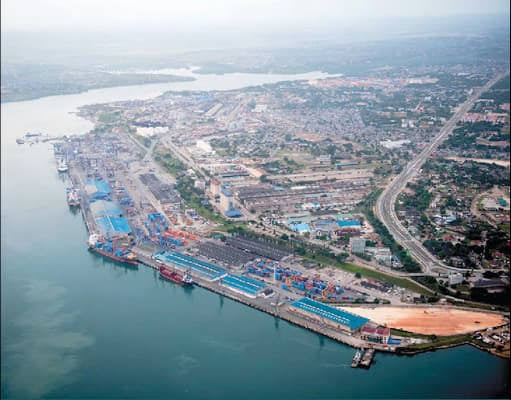
There are four river ports in Nigeria. They are in Lokoja in Kogi State; Baro in Niger State; Onitsha in Anambra State and Oguta in Imo State.
Baro and Onitsha are the nation’s two notable river ports. Oguta and Lokoja ports have largely been abandoned by the contractors. This is despite government intervention of about N13.65 billion.
Instructively, Lokoja hosts the headquarters of the National Inland Waterways Authourity (NIWA), which superintends river ports.
The story of river ports in Nigeria started when ex-President Shehu Shagari was told about the viability of building one in Anambra state, the Onitsha River port was then conceived and funds were allocated. Shortly after, the second Republic was truncated and the Onitsha river port dream died.
Even, the advent of democracy in 1999 did not draw attention to the Onitsha port, until former President Goodluck Jonathan attempted to revive it in 2012; he approved N4.6billon for the port’s rehabilitation.
Similarly, contract for the Lokoja river port was awarded in 2011/2012 at a cost of N4, 112,346,572.26 to Inter Bau Construction Ltd, it was expected to be completed in 57 weeks.
The Oguta river port in Imo State was also awarded at the same time to Scott Amede Engineering Ltd for a fee of N2, 743,625,787.15.
Also the Baro River port in Niger State was awarded at a cost of N2, 563,499,248.00 by the Federal Executive Council to a Chinese company, Messrs CGGC Global Project.
Sadly, even though the government has concessioned the Onitsha ports, the multi-Billion Naira equipment are yet to be fully put to use.
The Baro river port which had also been completed and commissioned by President Buhari has no access road.
No government official is talking about Oguta and Lokoja ports any more. Contractors were mobilised to the tune of about N800Miilion, yet another was mobilised, yet nothing has come out of it.
By its enabling Act, all river ports are under the purview of the National Inland Waterways Authority (NIWA), with headquarters in Lokoja.
Even though it is blaming disagreement over preferred concessionaire, it smirks of nonchalance for NIWA to have failed to put the port in Onitsha to use years after its completion. Now, Baro has been added to it.
How can anyone exonerate NIWA from the complicity, if about seven years after its completion, the very strategic Onitsha port has not been concessioned and put to use? How are we sure that what is currently bedeviling the Onitsha facility will not be the lot of Baro?
If all that is now required of Baro is access roads, NIWA should also know that the river port needs to rail links.
The contractor handling the river port has said that access road leading to Baro Port from the Gegu express way in Kogi State is not motorable and needed urgent rehabilitation by the Federal Government if the project is to be of any economic value.
By its attitude towards actualising the dreams of these river ports, it appears that the Government is not serious about them. The river ports were meant to open up the hinterland to commerce, while reducing pressure on conventional seaports.
Of what use is the Onitsha river port that was abandoned for many years, even after its completion? After it was concessioned, little has been heard about activities there. The case of Baro port is even more pathetic. Nothing has happened there since after completion.
We are at a loss as to why, unlike what obtains in other climes, river ports in Nigeria have been a failure and have not contributed anything to the economy.
There are examples of success stories in India, South Africa, to mention just a few.
In India, the Port of Kolkata is a riverine port in the city of Kolkata, it is located around 203 kilometres (126 mi) from the sea. It is the oldest operating port in India, and was constructed by the British East India Company.
Even though a river port, Kolkata handles automobiles, motorcycles and general industrial cargo including iron ore, granite, coal, fertilizers, petroleum products, and containers with Iron ore, leather, cotton textiles as it major export, while wheat, raw cotton, machinery, iron & steel are the major import. It generates about $170million annually for the Government of India.
The river port in South Africa is the country’s only remaining river port and is situated at the mouth of the Buffalo River in the East Cape Province. It also has a success story that is comparable to that of India.
At least three of Nigeria’s river ports are strategically located along the Niger and Benue trough. With her massive coastal stretch and for the purpose of harnessing her maritime potential, the Federal Government should take advantage of these ports to boost the nation’s intermodal system of transportation.
It is more pertinent to focus attention on river ports now that the nation is talking about Blue Economy.
The quantum of businesses that would have been ignited if these ports are functioning is phenomenal.















